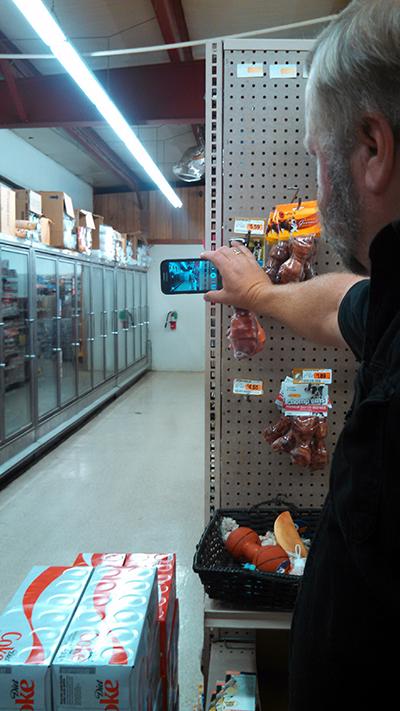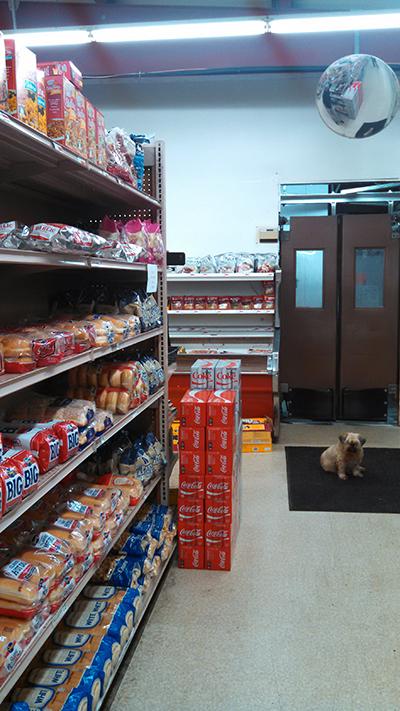 by Marty Hayes, J.D.
by Marty Hayes, J.D.
Earlier this month I read a news story about an armed citizen with a valid concealed weapon permit, who stopped a robbery in progress by shooting and killing the armed robber. According to news reports, the robbery suspect entered a Waffle House, robbed the restaurant and was leaving with the cash drawer in his hands. As he left the building, the armed citizen confronted him. The robber raised his own gun and shot at the armed citizen. The armed citizen returned fire, hitting the robber in the lower abdomen. If you want more information, search the Internet for “Waffle House Robbery Shooting.”
While this real-life example sets the stage for this article, the purpose is to neither criticize nor endorse the armed citizen’s actions, but instead, drawing upon my experience as a firearms trainer and President of the Firearms Academy of Seattle, Inc. for the last 26 years, to discuss the issues involved in intervening in a robbery in which you are not the targeted victim.
In my school’s training courses, we have been putting students into mock robbery scenarios for many years. We give the student that experience in training, so if it happens on the street, the student can fall back on some valid training to handle the situation. This is exactly the same reason for which law enforcement cadets participate in “mock scenes” towards the end of their academy training. I can still recall each scenario I participated in when I was in police academy 35 years ago! The training technique is valid, and every armed citizen who carries a gun for self defense should seek out and participate in scenario-based training.
What are the options when one finds oneself on the periphery of an armed robbery in progress? Let’s take a look.

The armed citizen caught up in a robbery has several options available, although they might not understand the pros and cons of those choices without considerable thought. There is the option of simply leaving, or shooting the adversary, or trying to hide, or trying to stop the robbery at gunpoint, as happened in the example at the beginning. Each option raises several concerns we must consider, so let us explore each alternative.
Leaving
Most firearms trainers will tell you that the smartest option you have when you become part of a robbery scene is to leave. I would not argue with that advice. If you are not immediately threatened–a gun stuck in your face, for example–but instead, you find yourself a few steps away and not the center of attention, you might be able to get out.
Will the robber(s) see you as you make your escape? This can affect your decision, but not necessarily. If you can quickly escape, getting out within a couple of seconds, and you are far enough away from the robber(s) to make it unlikely that they can hurt you, then immediately escaping might be the best option.
If you attempt escape, remember that there still may be robbers outside waiting to stop you from leaving, perhaps the person driving the getaway car. So, if you choose this option, remember, the danger doesn’t cease just because you escaped the physical confines of the store. It may, however, be prudent to look for a safe place outside from which you can observe and report to the police what is happening.
Hiding
If a reasonably safe escape is not possible, you might need to pursue a second option: hiding. Understand that I am not simply talking about playing hide and seek from the robber(s) but instead, looking around for a place where you can be hidden from view, but still see what is taking place, so you can stay alert to threats, at least controlling access to you, so that if the robbers come for you, you can react.
As logical as it sounds, hiding has drawbacks. What are the other people at the scene doing? Your observation position might be given away by one of the other store patrons. Someone appearing to be another shopper might be part of the robbery team. So, if you hide, conceal yourself not only from the identified robber(s) but also from anyone else in the store.
Do not hide in an area that is of high priority to an armed robber. For example, avoid the business office where the money is kept. Avoid the cooler and the direct route to it. Often, robbers march the patrons back into the cooler, where they either lock them in or shoot them. I would not want to face a wall of scared shoppers being prodded along by one or more gunmen, knowing that I was about to be discovered.
If possible, try to be far enough away from the center of activity that a 911 call to police will not be overheard. If you are able to make the 911 call, I advise you to simply state the location and “robbery in progress,” then end the call. You can do your duty, but staying on the line with dispatch draws your attention away from the threat, and the voice of the dispatcher over your phone might draw unwanted attention to your hiding place.


Frankly, I am not sure that calling the police while hiding in the store really is the best idea. What happens when the police start arriving with tires squealing, lights blazing and sirens blaring? If they catch the robbers inside, you may be trapped in a spur-of-the-moment hostage situation, in which the worst role to play is that of a hostage.
Under other circumstances, calling the police might make sense, so it is worth discussing. If the robbery ends while you are still hidden, then by all means, make the 911 call and share as many details as you know with law enforcement.
Thanks to modern cell phone technology, anyone who carries a cell phone with an integral camera possesses a portable surveillance device. Make sure the phone is silenced, turn the camera on, and stealthily edge just the lens out from behind cover. You can see what is going on beyond cover, and no one can see you, making it very unlikely that you would be discovered before you could see someone coming your way. Give it a try.
Taking Action
During the research stage, preparatory writing this article, I asked a question on the Network’s Facebook page, where we have about 12,000 followers. Over 100 responded to this question: “As in the Waffle House robbery where an armed citizen shot and killed an armed robber, would you do the same? (https://www.facebook.com/groups/221594457860509/)
The responses were varied, of course, but the following sampling is informative—
“One thing that is important to consider is that the clear shot may not put him down immediately and he may get a shot off and kill someone. Many people would view you (IMHO wrongly) as ‘the responsible party’ for ‘escalating the situation and getting someone killed.’ If there is a strong belief that he would have left with the money if you hadn’t interfered, you might be branded the bad guy.”
“As long he is just stealing the businesses’ money and not shaking down the customers, I say let it slide. If the robber is aggravated and looking like he would harm anyone then perhaps I would intervene.”
“Depends on the armed robber’s actions and numerous other circumstances. My desire would be to not act, but be a highly observant witness. However, if his actions lead me to believe he will be violent and I can act in a reasonably safe manner, I would quickly move to stop the attack.”
Let’s discuss using deadly force to stop the robbery and how this option might play out in real life.
We must ask: what response might my shots produce? Many simply do not understand that shooting someone is not the same as stopping someone. Assuming you are using a handgun, just because you shot the person, there is no guarantee they will quit doing what they were doing. Even worse, your shooting might incite greater violence. An armed robber waving a gun around threateningly may start shooting in reaction to your shots.
Shot placement counts. There is no handgun round that will effectively stop an attacker in his tracks, UNLESS you hit the central nervous system–the brain or spinal cord. A center of the chest hit may not stop the action immediately. If the robber has someone at gunpoint and you intervene, you better be able to make that brain shot, with a handgun powerful enough to defeat the bony skull and get into the brain. Even then, a brain shot does not mean the armed robber will not reflexively fire a shot. If you see a robber pointing a gun at one single person–like the cashier–and you decide to intervene, you had better be a fine shot, with nerves of steel to successfully pull off a hostage rescue shot.
What if the robbers are simply waving guns around and threatening their victims? The likelihood of the robbers hitting someone with a reflexive shot is less than in the example of a robber closely focused on a cashier. Here, use of a firearm to stop the robber may be a valid option. Still, you had better shoot fast enough and with sufficient accuracy to overwhelm the robber’s central nervous system and blood supply to the brain so that he goes down immediately. The upper chest, neck and head are the viable targets in this scenario.
Observe Rule #4
Be sure of your target, and what is behind/beyond it. This is one of the cardinal rules of gun safety. If intervening to protect the victims of an armed robbery, both of the elements of this rule apply.
First, while you have likely identified the guy with a gun as a violent felon, are you absolutely sure your conclusion is correct? Could the man with the gun be another armed citizen, like yourself, who pulled his gun sooner than you and is attempting to take control of the situation?
As you’ll read in my President’s Message a bit later in this journal, I referee high school football. One of the underlying principles when throwing a flag for a penalty is to make sure, before throwing that flag, that you see the entire act. We commonly see players turn their backs at the last second, in order to be hit in the back by an opposing player, instead of in the side. If I only see the final act of one player being hit in the back by another, without viewing the preceding action to be able to decide if what happened was valid under the rules, I might just be wrong if I throw a flag.
Likewise, if you draw and shoot an armed citizen or perhaps an off-duty cop because you did not fully identify the target, then your claim of righteous defense of self or others will be compromised.
Secondly, you must ascertain that your gunfire will not endanger other human lives if you shoot and miss. Do you ever miss your target when practicing? Of course! That practice wasn’t nearly as stressful as being caught up in an armed robbery. I am a huge believer in participating in action shooting sports, such as USPSA or IDPA. Engaging in shooting activities that create stress familiarizes you in making accurate shots under stress. While action shooting’s scenario-based stages are not normally based in any modicum of reality, if you use your carry gun and holster, and don’t get too wrapped around the axle about the rules and scenarios, it can be grand practice and training.
Are You a Mind Reader?
Many responses to my question suggested that if the armed citizen felt things were turning more violent, putting their own life at risk, then that escalation would trigger their intervention. And, while the train of thought sounds good, it suffers from one glaring problem: Action beats reaction.
How do you know if the robber is going to pull the trigger? You’ve already observed signs of impending violence because you are caught up in a violent encounter. We show videos of convenience store robberies in my classes, and in many of the videos, the robber suddenly kills the clerk without provocation or any display of intent immediately prior to the killing. Some just walk in and shoot; others shoot after getting the cash. In one situation, the robber holds the clerk at knifepoint, and all of a sudden, starts stabbing him in the neck, killing him. An overt increase in violence right before the murder is not apparent in any single one of these recorded robberies.
I, for one, do not believe I have the psychic powers to figure out what the robber is about to do. Without the ability to read minds, waiting to react until the robber decides to start shooting, puts your response behind the curve. If you have a gun in your hand, you could probably respond to his gunfire within a second. If your gun is still holstered, then you must expect it to take at least two seconds to decide to what to do, then to implement that action.
Knowing this, one option I’ve seen used during our role-play scenarios is to simply draw and fire at the very onset of the robbery–instantaneously, without challenge or delay. Effective as it appears, I really am not advocating that response, but only pointing out the option. If you see a lone robber in a store and you draw and fire immediately, how do you know he doesn’t have back-up? Another patron in the store might be his partner, designated to interdict anyone who tries to intervene. Additionally, given the increasing number of armed citizens carrying concealed on a daily basis, if you start shooting without warning, how might the other armed citizens react? Are your gunshots going to draw their gunshots, aimed at you? After all, they may not realize that you are a good guy.
Taking Robbers at Gunpoint
Another option that people on our Facebook page indicated they might employ is to challenge the armed robber, put him on the ground at gunpoint and call the cops. Of all the above responses we are discussing this is probably the most dangerous. I am not saying you shouldn’t do it, but in case you ever consider doing it, I do want you to understand the inherent risks and issues. Unless you have been trained in how to subdue and hold a violent attacker, AND you have practiced doing this, it probably should not be an option for you. Police officers receive hours of direct training, and once they leave the academy, should be able to handle a felony arrest, if needed. But understand, they also have radios to call for back up, wear bullet-proof vests, and have the luxury of being instantly identified as one of the good guys, so they do not have to worry about mistaken identity.
The armed citizen typically does not wear body armor, nor do we usually have armed back-up available. The same issues facing an armed citizen who chooses to immediately draw and fire apply here, too, with one major addition. Cops should arrive on the scene before too long, and they will be taking everyone at the scene at gunpoint, trying to sort it all out. So, you will have police guns pointed at you, which is also dangerous.
If you consider this an option, please review our eighth educational DVD, Legal Considerations of the Use of Non-Lethal Defensive Force, where I explain the issues inherent in taking criminal suspects at gunpoint.
It is not my intent to give advice on how to respond to a robbery in progress. Instead, this article is offered to warn our members about the many issues involved. We carry guns to protect our loved ones and ourselves, both at home and out in public. When we carry guns for self defense, we need to be trained to respond appropriately. Sadly, most armed citizens do not receive the training they really need to handle scenarios like an armed robbery in progress. There has never been a better time in America to get good, solid handgun training, and the competition for students amongst instructors has resulted in affordable training courses all across the nation. If you have not taken training this year, then I would respectfully suggest you get some.
In closing, the foregoing is just one firearms trainer’s perspective on intervening in an armed robbery in progress. If any of our Network Affiliated Instructors would like to comment or add to this information, please email me a paragraph or two outlining your additional thoughts, and we can continue this discussion next month.
Click here to return to November 2015 Journal to read more.
